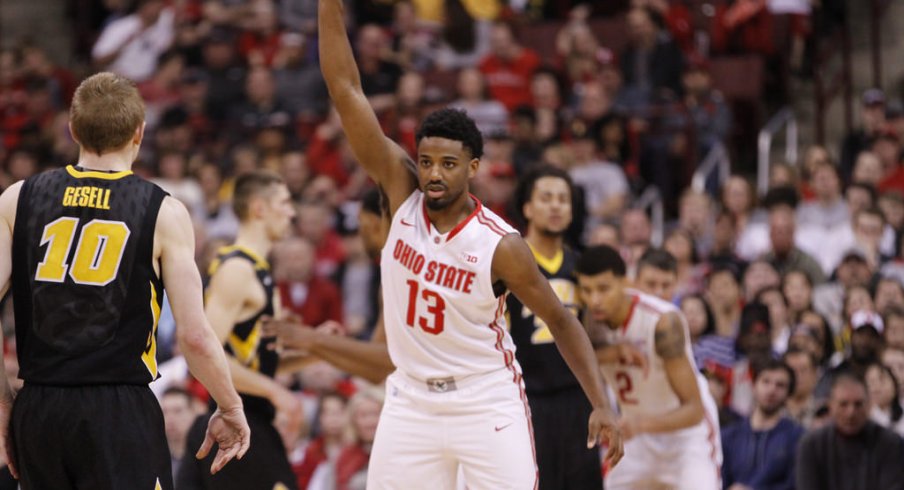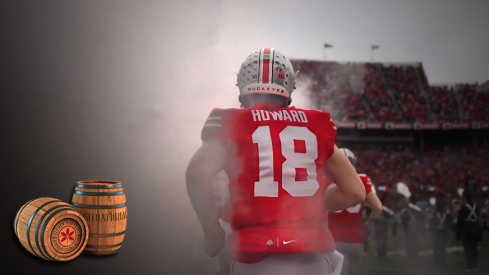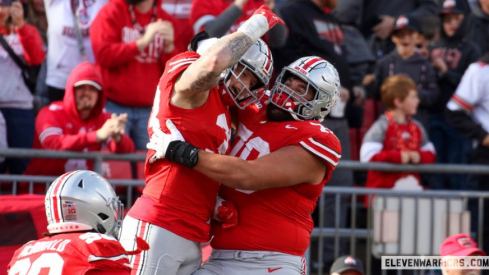Four-star 2026 TE Corbyn Fordham gives Ohio State a Thanksgiving day commit.
If Ohio State fails to make the NCAA tournament this season it will be for a number of different reasons.
The Buckeyes can point to their 8-5 record in the non conference which now includes three losses to teams currently outside of the RPI top-100. They can also look at a 2-6 mark in the Big Ten against potential NCAA tournament teams. Then, of course, there’s the fact they have an 11 currently sitting in the loss column. You can blame it on the team’s youth if you want to, as well.
All of these things are true, and Ohio State coaches and players would be the first to tell you if they won some more games then they wouldn’t be in the situation they’re currently in: having to play their way into the NCAA tournament.
But the Buckeyes also did not get any favors from the bottom of their own conference.
The Big Ten currently has eight RPI top-100 teams, which is tied for fewest among the five major conferences. The Big 12 is the only other Power 5 league in the country with eight, but remember there are only 10 teams in the Big 12 whereas the Big Ten has 14. Ten of the ACC’s 15 teams are in the RPI’s top-100; the SEC has nine; and the Pac-12 has 11 of its 12 teams in the top-100.
The RPI isn’t a perfect measure of how good a team is — there are various metric systems out there — but it’s what we’re going to use for this story to determine a league’s strength.
Northwestern, Penn State, Nebraska, Illinois, Minnesota and Rutgers all being sub-100 teams in the RPI actually hurt the Big Ten bubble teams and, in particular, Ohio State. Sure, the Buckeyes avoided losses by beating all of those squads and padded an 11-win season in the league, but conference play is where you’re supposed to earn quality wins, not avoid bad losses.
The unbalanced schedule in the Big Ten meant Ohio State played nine of its 18 conference games against those teams outside the RPI top-100. That’s 50 percent. Indiana is the only other team in the conference with that type of unbalance. So yes, the Buckeyes only had two quality wins in the league, but they also had fewer opportunities than the rest of the teams in the top half of the Big Ten.
The balance in the Big Ten just seems like it is strikingly different this season than it has been in year’s past, too. There are six teams — Indiana, Michigan State, Maryland, Iowa, Purdue and Wisconsin — that are locks for the NCAA tournament. All six of those squads are ranked 32nd or higher in the RPI and 27th or higher in KenPom’s advanced statistical ratings. That’s really good. The top part of the Big Ten is really, really strong this season.
But when you factor in that, along with the bottom of the Big Ten being so bad, it puts the middle-of-the-pack Big Ten teams in a bit of a tough spot. And this season in the Big Ten, there are only two such teams: Ohio State and Michigan.
Again, both only have themselves to blame for not winning more games against the top-tier competition, but at the same time they also should not be playing teams in the Big Ten that are hurting their resume more than helping.
This is more of an indictment on the bottom six teams in the Big Ten.
Just look at the Pac-12. Eleven of the league’s 12 teams are in the RPI top-100, but ESPN.com currently projects only seven to make the NCAA tournament — the same number as the Big Ten. Seemingly every game played in the Pac-12 is a chance for teams to earn an RPI top-100 win. The same can be said of the Big 12, where 80 percent of the league’s teams are inside the top-100. That’s clearly not the case in the Big Ten.
The bottom of the Big Ten has to be better. If not this year, then certainly in the future.
Ohio State and Michigan certainly could have done more to help their own cause this season and this isn’t designed to be an excuse. It’s more to show just how poor the bottom of the Big Ten has been all season and how it’s done more harm than good for teams trying to make the NCAA tournament. The six teams at the bottom of the Big Ten have not given the rest of the league any help.
This wasn’t the season the Buckeyes could afford no help.


